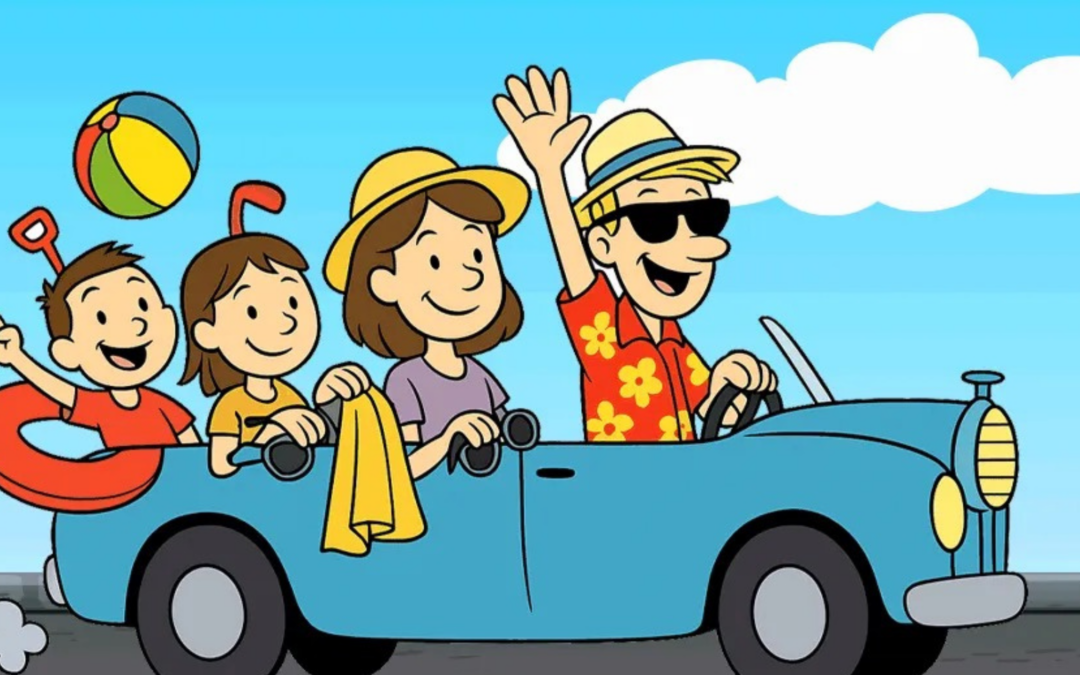parentingspecialneeds.mydigitalpublication.com
When you can’t get away, a “road trip” through your house can turn any day into a beach day. Learn how with this fun activity.
TURN YOUR HOME INTO A FUN ROAD TRIP TO THE BEACH
My family and I love going on road trips, like packing a weekend bag to visit the grandparents, taking a day trip to go hiking at a nearby National Park, or longer excursions like visiting a faraway country. I’ve visited many places and can truly say they were some of the most memorable moments in my life.
Our time and money may occasionally be scarce, so we explore local museums, parks, and events. All those trips require us to use some form of vehicle: airplane, car, train, cruise ship, or an RV.
If you don’t have the opportunity to get away, plan a vacation in your own home, like “going to the beach.” Prepare snacks, set up a room with towels, beach chairs, small containers filled with sensory materials (sand, water), and add buckets and shovels.
You may want to hide some seashells around the room for everyone to find. Don’t forget to add some Beach Boys’ music in the background or the sounds of waves crashing along the shore.
SKILLS PRACTICED
Activities such as this provide abilities to practice skills such as:
- Spatial awareness
- Body coordination
- Sensory integration (balance, body awareness, movement control)
- Listening and following directions
HOW TO BEGIN YOUR ADVENTURE
Begin this adventure by getting your family together and pretending to drive to the room where the beach is located. Follow the steps below to get the family to that location:
Materials Needed
- Plastic or paper plates
- Homemade traffic light
HOW TO PLAY
Designate a family member to be in charge of this activity
- Give each family member a plate to represent a steering wheel
- Follow the steps below to pretend to drive the cars to their final location.
a.Open the door and step into the car.
b. Close the door and put on the seatbelt.
c. Turn on the ignition and place the stick shift in reverse (backing out of the driveway), walking backwards, looking over their shoulder.
d. Shift the car into drive and walk around the room or house, moving in different directions, avoiding accidents along the way.
e. At this time, the parent in charge of the activity may point to the traffic light and call out “RED LIGHT” – the participants step on the brakes to stop their car. Pretend to turn on the air conditioning and roll up the windows because it’s getting a little warm in the car.
f. “GREEN LIGHT” Change their form of movement to a gallop or skip around the room.
g.“RED LIGHT” Pretend it’s raining, wave the arms overhead as if they are the windshield wipers.
h.“GREEN LIGHT” They are approaching a road with many potholes. Slow down and jump with two feet in all directions (backwards, forwards, sideways).
i.“RED LIGHT” Time to find the nearest gas station and fill the gas tank (pretend to bend over and pour the gas into the gas tank).
i.“GREEN LIGHT” Begin marching around the room, slowing down to their destination (the beach)
ENJOY YOUR TIME TOGETHER AT THE BEACH!
ADAPTATIONS FOR DIFFERENT ABILITIES
If a family member has difficulty with spatial directional movements or the ability to navigate and move within their surroundings, the “Driving Here, Driving There” activity will help them practice and learn these skills.
They will use their visual, auditory, vestibular (balance), and proprioceptive (body awareness) sensory information to navigate within a room.
This activity helps them understand where to step to avoid people and obstacles as they move to their destination.
This is a crucial safety skill and key in everyday activities like walking, reading, and following directions.
- Start with just two people in the room when participating in this activity.
- Add others as they become more proficient with the skill.
- Add objects around the room so they learn to navigate around them.
- Start moving slowly and increase the speed as they learn how to move around without running into people and things.
- Point to the red light on the signal to stop if they are coming near an object and show them how to navigate around it.

Recent Comments